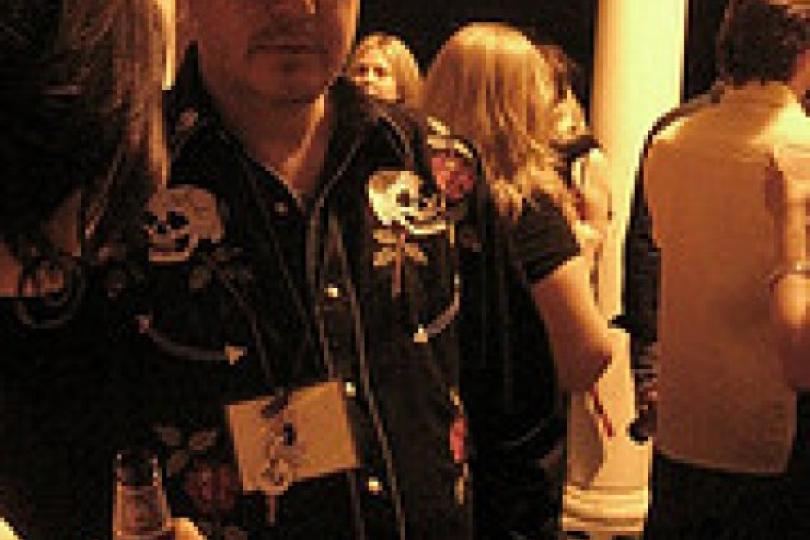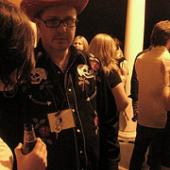Writing transitions
Editorial

It’s always been seen as a sort of truism in design that if you want to know the skills of a designer, you look for the little details. If it’s a newspaper layout, as an example, you check out where the page numbers are put, and how headers are placed, and if there is a line that divides a photo cutline from the text below it, and what sort of line, and how big it is. The printer’s devil is in the details, I guess, and having done editorial layout for three years, I agree. A careful designer knows the value of well-used ligatures, and what an interpunct is, and why you want to avoid klempen and plenken. It’s a million little things, but all contribute to the readability of a printed item.
It’s the same way in playwrighting. And I mention this because I have been reading a lot of plays lately that get the big details right -- plotting, dialogue, characterization -- but simply ignore the smaller details. Stage directions seem to be an afterthought. There is very little description of physical action. There’s very little description at all, probably because designers and directors tend to toss that stuff out. And, the truth is, if they can toss it out and its absence doesn’t affect the play, it probably didn’t need to be in the script. But this doesn’t mean we shouldn’t bother writing these things. Instead, we should make sure that, when we do write them, they contribute to the script in such a way that excising them would be unthinkable.
I’m going to focus on transitions here, because it seems to be the part of playwrighting that has been most thoroughly abandoned. A vast majority of the plays I read -- and, in fairness, that I have written -- don’t have transitions at all. Scenes just end. Lights go out, lights come up, and we’re in a new scene. And, for some plays, this will be the best way to transition between scenes. It’s not especially theatrical, though, and mostly seems inspired by the sudden cuts in film and television. It’s my opinion that there are very few circumstances when theater benefits from being like film and television; it benefits most from being like itself.
Shakespeare, as an example, was a playwright who loved abrupt transitions, but they often had a logic to them. In “Julius Caesar,” as a famous example, the title character suddenly turns away from Calpurnia, with whom he has been discussing death, to ask a servant “What say the augurers?” It’s a significant shift, with Caesar literally moving away from one character to start a discussion with another, but the transition moves from a meditation on death to a look forward, at Caesar’s own assassination. Particularly in Shakespeare’s later work, he preferred these abrupt sort of transitions, and freighted them with irony, or portent, or commentary.
Mainstream theater has tended to like to break up scenes into discrete units -- lights dim between scenes, and curtains close between acts. Some of this is, I think, a decision based on convenience -- especially if there was a big set change afoot, and you were working on a naturalistic play, it didn’t really do to have the audience see properties being moved around by stagehands. But this is just one choice. Brecht eliminated transitions altogether, but liked to have the audience see people moving sets about and changing costumes onstage, as it contributed to his desire to constantly remind the audience that they were seeing a play. Sixties plays often made use of a sort of soliloquy as a bridging device between scenes -- its’ extensively used in “A Day in the Death of Joe Egg,” where the narrator, Bri, will often turn to the audience and speak directly to them while one scene transitions into another behind.
If its not a naturalistic play, a transition can be a scene in and of itself. Keep the lights on and make a fuss out of moving furniture, or changing clothes, or swapping out cast members. Have your playwright or director remain onstage and offer notes between scenes. If you’re doing an especially angry play, invite audience members onstage to smash parts of the set that are no longer needed. Have one scene start while another is still going on, so they overlap. Interrupt the action with a dance number, or a song, or a poem, that helps bridge one scene and another. Have fun with it.
Take a close look at your script and ask yourself if the best way to transition between scenes is to just type END SCENE ONE and then start a new page and type SCENE TWO. Sometimes it will be. But if you really dig, there may be another way to transition, one that the play itself suggests. An inventive transition can go a long way toward giving a play its own character, and involves the audience in a way that a simple blackout wouldn’t. And it’s a mark of the care you take with your writing that you have really thought about what transition would be best, rather than just cutting the action from one scene to the next, and letting a stage manager figure out how to get all of your props offstage before the next scene starts.




